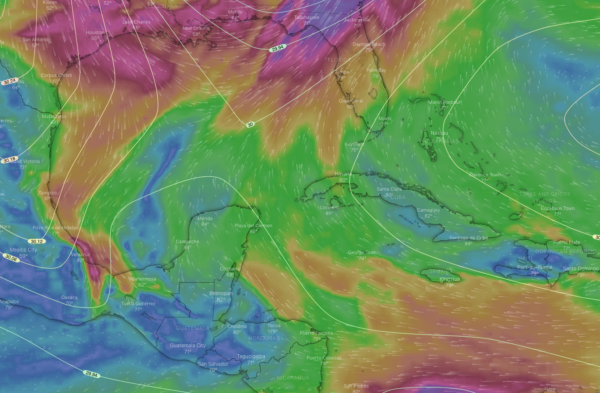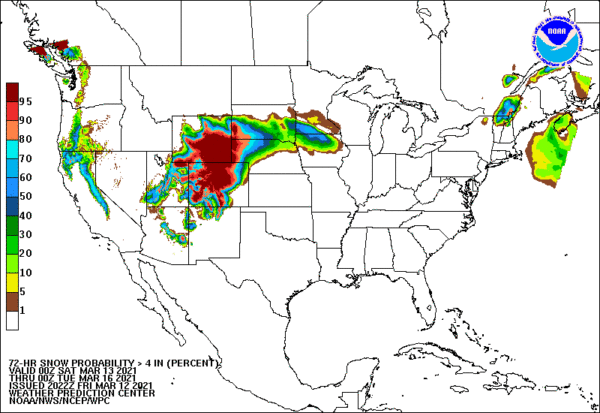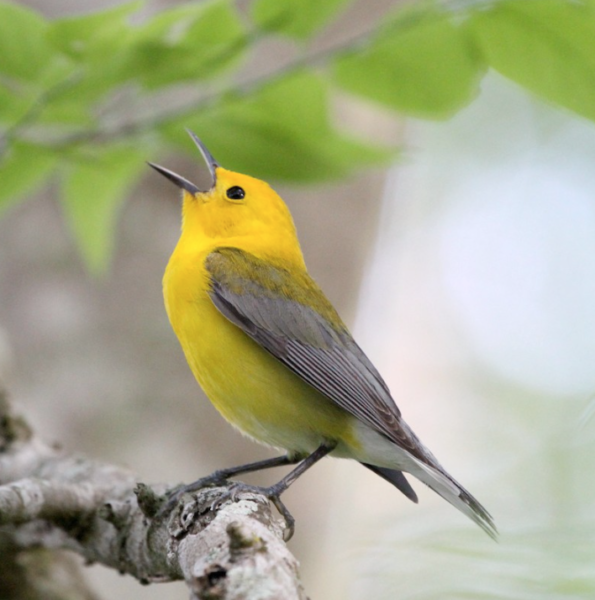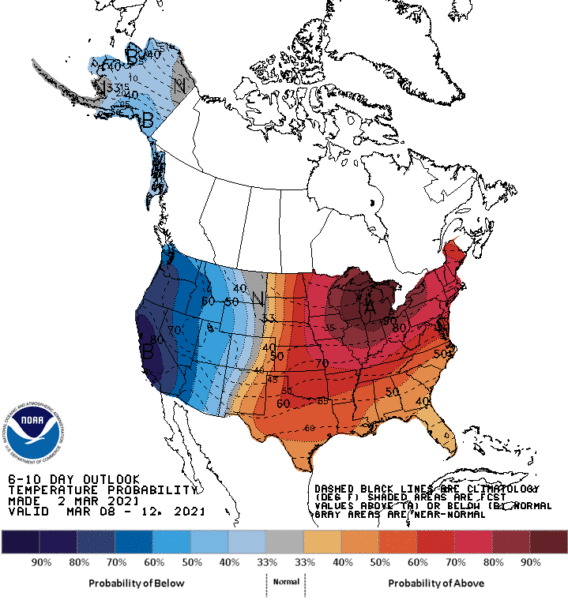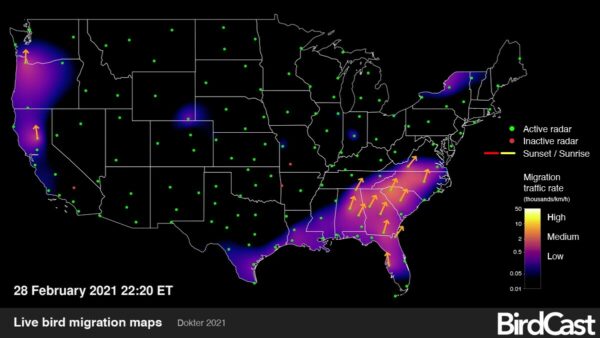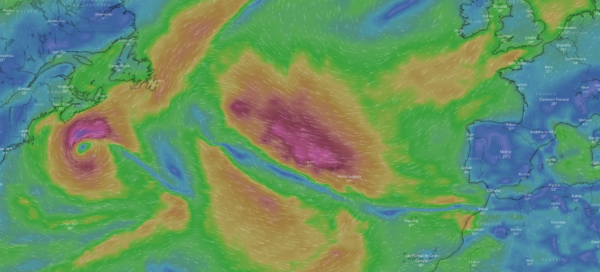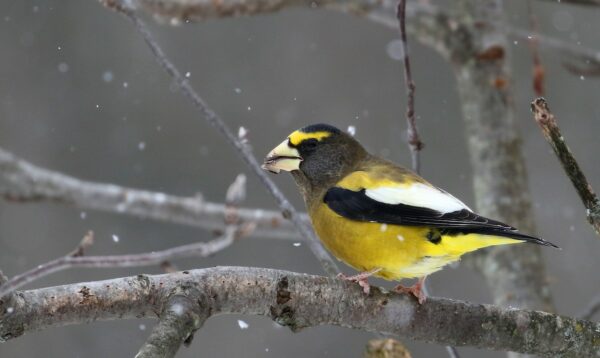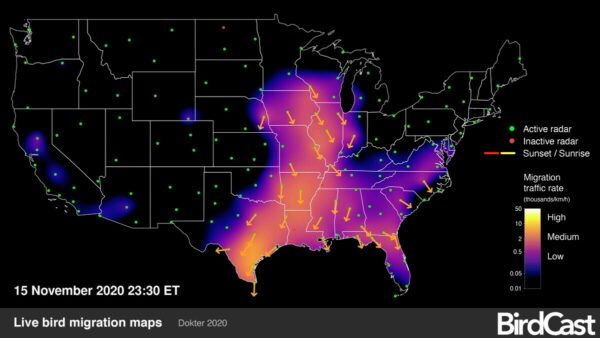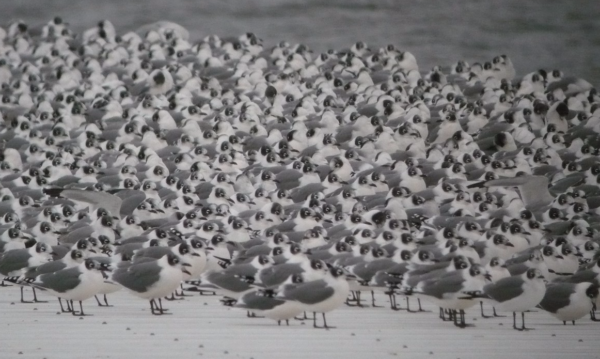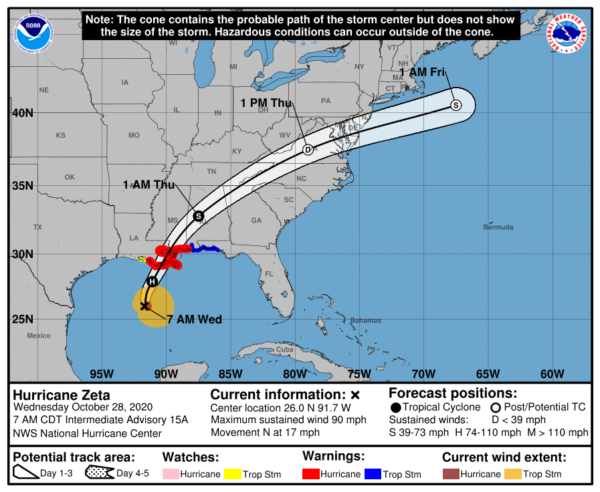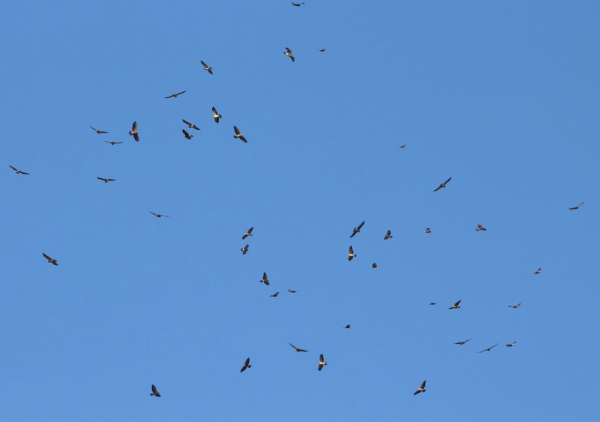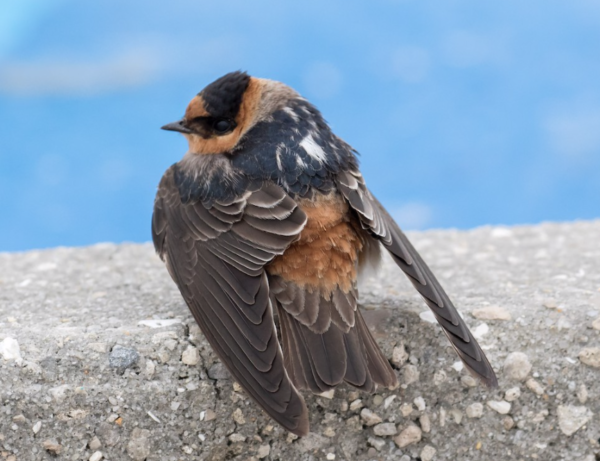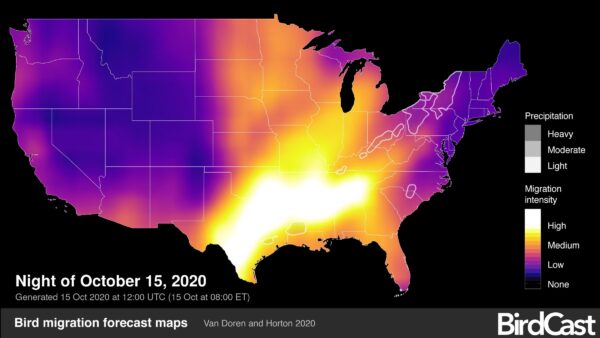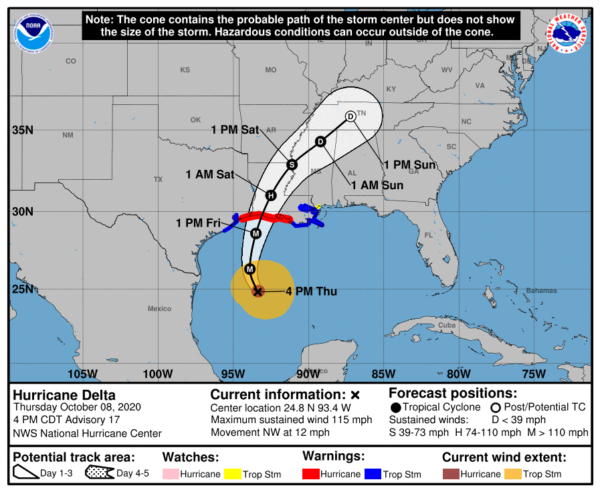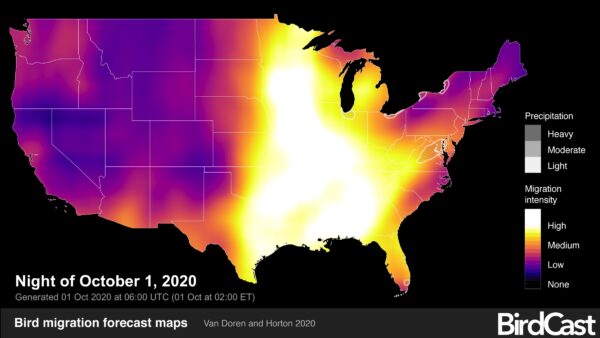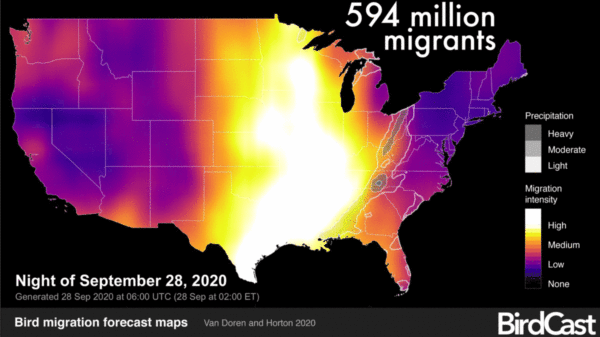News
With this season's migration underway, the BirdCast team would like to highlight the potential for an unusual migration event associated with predicted weather in the Gulf of Mexico region. The first significant cold front likely to interact over the Gulf of Mexico with incoming trans-Gulf migrants is predicted to pass through the region from 17-20 March. Let’s take a moment to review the current conditions while considering some of the (simplified) mechanics of this fascinating system. Read more...
Winter Storm Xylia is forecast to bring a blast of late winter to the Central Rockies and northern Great Plains this weekend and early next week. Birds will certainly respond to this storm, especially those of more open terrestrial habitats, by seeking more favorable locations free of snow if possible. Read more...
Over the coming weeks, our excitement about arriving migrants in the Gulf of Mexico region from Central and South America and the Caribbean will build to fever-pitch! Some of these migrants will arrive after significant over water flights, which we generally call trans-Gulf migration. We will speak of it often, to be sure! And though the peak of these movements is more than one month from now, even in mid March some inbound trans-Gulf bird migration is occurring over the western Gulf of Mexico. Read more...
Above average temperatures are coming to the eastern half of the US next week, and with these warming temperatures will come early season movements of birds. But for the western US, no such luck arrives. Keep a close eye on forecasts, ours included, to see what happens! Read more...
As the calendar page turns to March, the BirdCast team opens the spring 2021 migration forecasting season with the return of forecast and live migration maps! Birds are already on the move and have been for many weeks, but number have been increasing, particularly in the southeastern US last night. Read on to check on what species might be on the move in your part of the country. Read more...
Welcome to 2021! Team BirdCast has a number of projects underway for this year. And although we are still a good 4-6 weeks from the first significant movements of mid to late winter migrants moving in the US, keen observers should be aware of several patterns to watch now. Read more...
During Fall 2020 a “superflight of finches” occurred in the eastern US, featuring the biggest Evening Grosbeak migration in more than 20 years, redpolls undergoing their largest movement in perhaps a decade, and Pine Siskins irrupting in their best numbers since 2008. These ‘Finch Superflights’, which are defined as southern flights of all eight eastern irruptive finches, are rare, and this year, conditions have aligned and all species have moved in numbers, including the rarest of irruptives, the Pine Grosbeak. Read more...
With dawn’s arrival today Team BirdCast officially closed the books on another migration season of forecasting where, when, and how many birds will migrate over the contiguous US. Team BirdCast thanks all of you who spent time perusing our forecasts, pondering our interpretations, and (hopefully) ground-truthing our speculations! Read more...
Numerous storm-driven birds have likely appeared in peninsular Florida as the meandering Tropical Storm Eta churns in the Gulf of Mexico. With the forecast for the storm to make landfall and move quickly off into the Atlantic Ocean in the coming 24 hours, safe and careful observers may find a range of Gulf of Mexico seabirds and some displaced waterbirds. Read more...
Franklin's Gulls may be on the move far to the east of their normal autumn range in the coming 24-72 hours, as an intense storm system continues to move across the country toward the Atlantic Ocean and entrains and displaces individuals and flocks of this long-distance migrant. Observers in northeastern North America should be on the lookout, especially along coastlines, lakeshores, and rivers, from Wednesday through Friday. Read more...
Spend your spooky Halloween evenings safely enjoying late season bird migration. For the intrepid with no aversion to long nights outside in cold temperatures, direct your optics to the face of the Micro Blue Moon to watch birds pass! Read more...
Hurricane Zeta is powering toward the Louisiana coast, predicted to make landfall on Wednesday afternoon. This storm will certainly entrain Gulf of Mexico seabirds, as well as displacing some nearer shore species inland and dropping overland migrants. Given the storm's arrival time, predicted track and speed, birders from the Louisiana coast to Cape May, NJ should keep safe, socially distanced, and watchful eyes on all bodies of water and your favorite birding patches. Read more...
Central Texas birders, drop what you are doing, distance yourselves from others, and go birding! Radars in the area are currently detecting what may be streaming raptors. Tell us what you find! Read more...
Birders in eastern North America should keep their eyes open, especially in coastal and lakeshore locations, for Cave Swallows this weekend and in the weeks to come. The passage of a strong weather systems, like the cold front moving through the northeastern US today, hearkens the start of a period during which this species can occur, occasionally in significant numbers, far outside of its typical southern ranges. Read more...
Easterly flow in the North Atlantic has the potential to bring European species into northeastern North America in the coming days. Marginal to favorable conditions for such displacement are predicted for the coming days, so birders should watch their favorite patches closely. Read more...
More than 400 million birds will take flight tonight across the contiguous US tonight, highlighted by large flights in the south central US. Tonight will be one of the last very large flights of the autumn, with a diverse array of species on the move. Read more...
Hurricane Delta is a powerful storm predicted to make landfall late on Friday on the Louisiana coast. Gulf of Mexico seabirds, as well as some nearer shore species and overland migrants, will be associated with the arrival and passage of the storm as it moves inland to the north and east. Read more...
BirdCast is thrilled to announce a public service announcement from former First Lady Laura Bush and a proclamation from Dallas Mayor Eric Johnson about the Lights Out Texas initiative to protect nocturnally migrating birds from the hazards of light pollution! Read more...
More than half a billion birds will take flight tonight across the contiguous US tonight! The BirdCast model is predicting intense migration in many areas of the central and southeastern US in the wake of a passing cold front. Read more...
The BirdCast model is predicting high intensity migration this evening, with more than half a billion birds on the move! And there will be additional, similarly large flights, in the coming nights! This will likely represent one of the largest series of migration nights of the year in the contiguous US. Read more...

